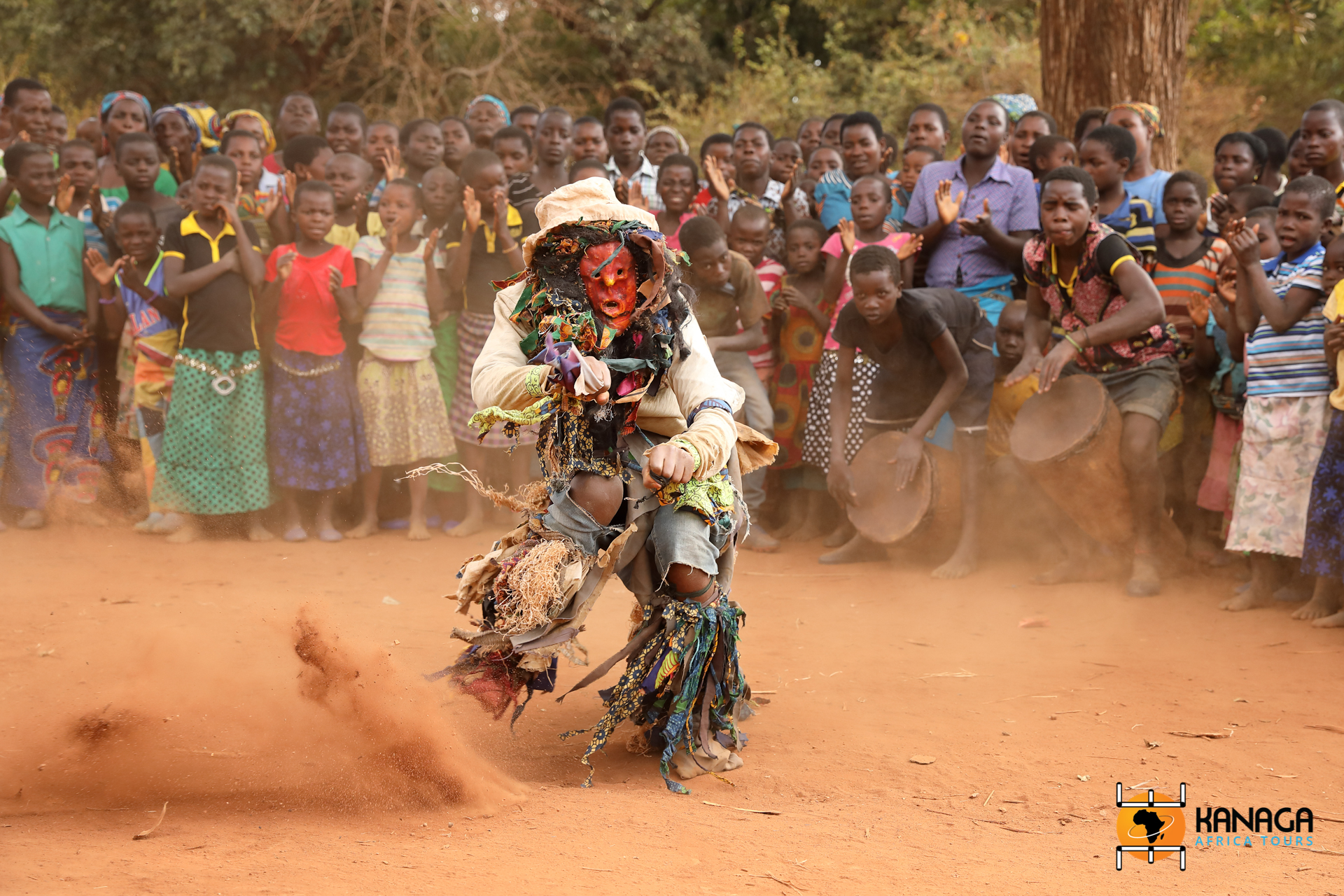A small but very rich mosaic of peoples, mostly rural, inhabit Malawi, each with their own fascinating traditions that have been perpetuated intact for centuries and of which the ancestral ceremonies, accompanied by a kaleidoscope of dances, rhythms and initiatory masks, are at the heart.
Is Malawi a treasure trove of particularly valuable cultural treasures?
Suffice it to think that a UNESCO-funded programme started a few decades ago to document and record the entire Malawi traditional music universe, or that UNESCO has also included in its indicative list of intangible heritage, perhaps the country’s most representative ancestral dance, the Gule Wamkulu of the Chewa, and one immediately realises how varied and rich the ethnographic substratum of a relatively small country is.
While the lively dances and elaborate masks that accompany the gule wamkulu initiations are among the most representative and participatory in Malawi, each people has its own, from the Lomwe with their propitiatory tchopa ceremonies to the Ngoni with the warrior-like movements of the ingoma, or the Tumbuka who hand down the exorcistic and therapeutic ritual of the vimbuza, and even the Islamicised Yao group with their manganje rites of passage dating back to pre-Islamic ancestral culture.
In short, there is a vast collection of traditions, customs and traditions, linked to animist spiritualities, which have been handed down from generation to generation, perpetuated for centuries within the local populations and which periodically enliven rural villages, traditional courts or historic city quarters.
A kaleidoscope of events that do not follow a fixed calendar, but refer to the cyclical nature of the seasons of rain, sowing and harvesting, which mark the propitiatory rituals, funeral ceremonies, initiatory and symbolic passages from youth to adulthood of the new generations, in community events dating back to the mists of time, coordinated and established by a council of wise men and spiritual leaders, within the traditional hierarchies of each people.
Practised on a variety of occasions, but regulated particularly during the summer months by rainfall and harvest trends, the Gule Wankulu dance is performed by the Nyau brotherhood of young initiates of the Chewa people, who dress in tribal costumes of straw and fibres and wear wooden masks, impersonating the spirits of the ancestors and creating a link between the world of the living and that of the dead. The indemonised rhythms and movements that accompany the ritual are among the most evocative in Malawi, but are perpetuated among the Chewa peoples who also live in the neighbouring countries of Zambia and Mozambique, attracting numerous visitors and tourists in an extraordinarily participatory and engaging traditional and communal celebration. Dating back to the 17th century, with the advent of the first evangelising missions and the European colonial presence, attempts were made to ban it, but it has endured to the present day, perpetuated within the Nyau secret society.







